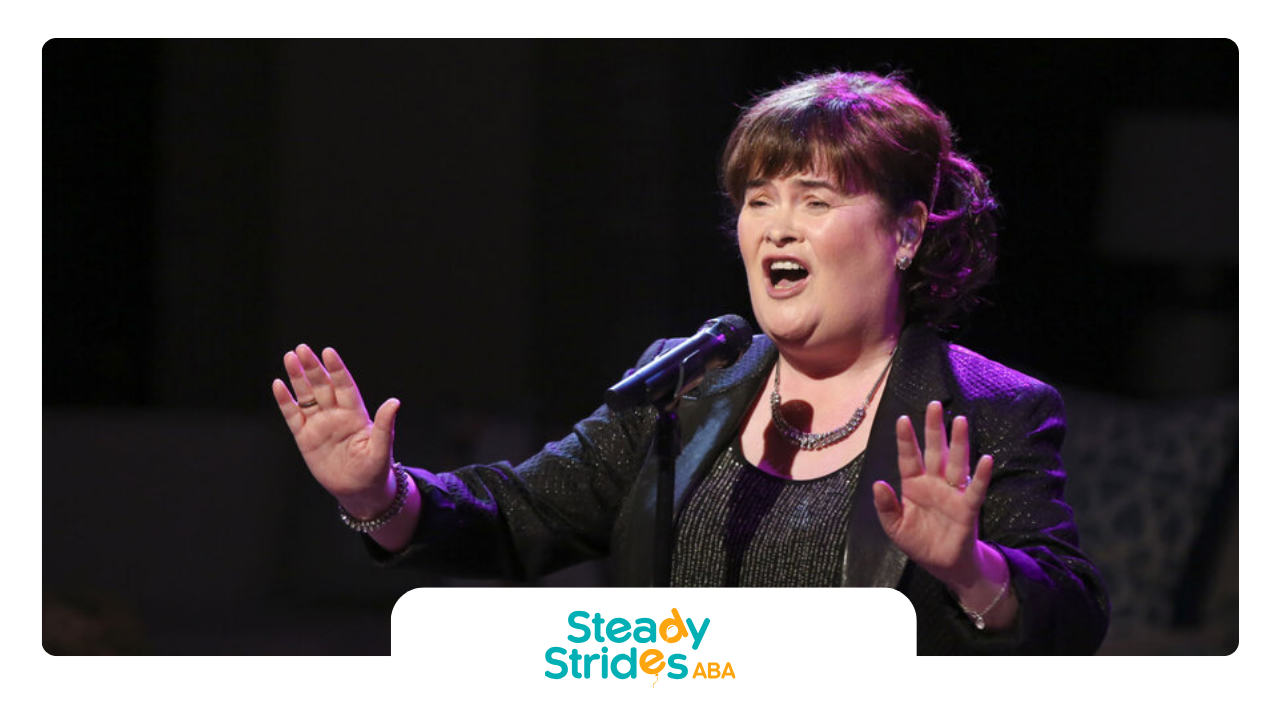Understanding Neurodiversity Movement
The neurodiversity movement champions recognizing and accepting neurological differences, like Autism Spectrum Disorder (ASD), ADHD, and dyslexia. Grasping where this movement came from and its defining moments helps foster a mindset that celebrates diverse minds.
Origin of Neurodiversity Concept
It all began in the late '90s. In 1999, Judy Singer, an Australian sociologist, brought the term "neurodiversity" to life in her Master’s thesis, "Odd People In". She shone a light on the idea that neurological differences like autism, ADHD, and dyslexia aren't defects or disorders—they're natural variations in the human genome. It's a bit like saying, “Hey, brains come in all sorts, and that’s cool.” This shift moves from seeing differences as problems to understanding them as part and parcel of human thinking.
This movement didn't just sprout overnight. Back in 1993, Jim Sinclair, an autistic self-advocate, made waves with a speech, "Don’t Mourn for Us", at an autism conference in Toronto. Sinclair told parents and society: appreciate folks with autism—don’t treat their condition like a tragedy. His words set the stage for what was to come.
| Year | Key Development |
|---|---|
| 1993 | Jim Sinclair's "Don’t Mourn for Us" speech |
| 1998 | Harvey Blume's article "Neurodiversity" in the Atlantic |
| 1999 | Judy Singer's Master’s thesis and coining of "neurodiversity" |
Advocates and Key Moments
Over the years, key people and big moments have helped steer the neurodiversity movement:
- Jim Sinclair: A trailblazer in autistic self-advocacy, Sinclair stressed the value in understanding—and accepting—neurological differences rather than trying to "fix" them. That memorable 1993 speech laid the groundwork for the neurodiversity movement.
- Judy Singer: Known as the movement's founder, Singer's 1999 thesis put words to an idea many felt: neurodiversity, a concept that has since rooted itself in the hearts and minds of the autistic community and beyond.
- Harvey Blume: In 1998, Blume took "neurodiversity" to the mainstream with his article in the Atlantic, sparking further chats and growing awareness of the neurodiversity concept.
The movement keeps rolling, with many autistic self-advocates and groups pushing for neurodivergent pride and encouraging folks to celebrate their unique brainways. For more tips on autistic self-advocacy, hop over to autism self-advocacy resources.
By learning these origins and big moments, we can better appreciate where the neurodiversity movement is now and work towards a society that values and uplifts neurodivergent people. Have a look at our autism empowerment resources for more info.
Neurodivergent Identity
Grasping what makes neurodivergent folks unique can change the way society thinks, helping include more voices and spread awareness. This bit's all about understanding neurodiversity and breaking down those pesky stereotypes.
Neurodiversity Paradigm
Way back in 1998, Judy Singer, an Aussie sociologist, came up with the term "neurodiversity." She was basically saying that everyone's brain is like a snowflake—special and different. This idea zooms out from thinking of stuff like autism as disorders; instead, it's about seeing them as just how some people's brains naturally work.
Under this way of thinking, folks who are neurodivergent aren't just seen for their challenges; they're seen for their superpowers too. Take someone with Autism Spectrum Disorder (ASD) for instance: they might be a whiz at spying tiny details or spotting patterns others miss, though social stuff might trip them up a bit. Getting where they're coming from helps us build surroundings that lift them up instead of dragging them down.
Why Neurodiversity is a Game-Changer:
- Self-Acceptance: When neurodivergent folks get this concept, they reach for the stars in their careers and feel pretty good about themselves since they know their quirks aren't signs of issues.
- Fair Language: Tossing out words like "abnormal" and "disordered" for "neurodivergent" means there's no one-size-fits-all "normal" out there.
Wanna dive deeper? Check out our guides on understanding autism spectrum.
Challenging Stereotypes
Stereotypes about neurodivergence often pop up because people don't really get it or haven't been around all kinds of thinkers. These stereotypes can be pretty damaging, like putting shackles on opportunities for neurodivergent people.
Busting Common Myths:
| Stereotype | What's True |
|---|---|
| Neurodivergent folks are "broken" | Nope, neurodivergence is just a different way of crunching info—not a flaw. |
| They can't lead successful lives | Think again! Loads of neurodivergent people crush it in all sorts of fields by playing to their strengths. |
| Communication is a no-go | It's different, sure, but tons nail it with the right backup and a bit of understanding. |
To kick these stereotypes to the curb:
- Spread the Word: Teachers, bosses, and everyone need to understand what neurodiversity is all about and how awesome neurodivergent folks can be.
- Back Their Voice: Helping those who are neurodivergent stick up for what they want builds their independence and confidence.
For extra guidance on backing neurodivergent folks, swing by neurodiverse community support.
Neurodiversity in Society
Workplace Inclusion
Getting neurodiversity right at work means making a place where everyone shines, especially folks who think differently. By understanding what neurodivergent employees need and giving them a hand, employers can tap into some incredible talents. Treating neurodiversity like a superpower opens doors to all sorts of skills these folks bring along.
Understanding What's Needed:
- Set up quiet zones for those who can't stand noise.
- Be cool with flexible hours to match different work styles.
Keeping It Clear: Some neurodivergent workers might miss subtle hints or body language. Saying what you mean without beating around the bush is gold.
Playing to Their Strengths: It's not about ignoring challenges, it's about working with them. When people know themselves well, they're happier and more ambitious at work.
| Supportive Actions | Why It Works |
|---|---|
| Flexible hours | Respects personal work rhythms |
| Quiet workspaces | Avoids sensory overload |
| Direct talk | Boosts clarity and alignment |
| Task adaptability | Uses strengths to the fullest |
Educational Support
Just like in the workplace, schools need to pay attention to what neurodivergent students require. Challenges abound, and they might need things like clear explanations or a bit of extra time on projects to keep things chill.
Boosting Comfort:
- More time on exams or assignments.
- Chill-out breaks to combat sensory overload.
Crystal Clear Directions: Breaking down instructions simply can keep them focused and on track.
Welcoming Learning Plans: Crafting lessons that incorporate different learning styles ensures fair play for all students.
| Classroom Techniques | Perks |
|---|---|
| Detailed explanations | Aids comprehension |
| Ample assignment time | Ensures detailed work completion |
| Overstimulation breaks | Lowers stress levels |
| Holistic curriculum | Ensures fair learning for everyone |
By embedding these practices in both work and school environments, neurodivergent individuals are not just empowered; they thrive, driving forward a broader movement of pride and strength. It's all about seeing neurodiversity as a societal strength, fueling both personal and community growth.
Supporting Neurodivergent Individuals
Supporting neurodivergent folks is key to building a kind and welcoming place for everyone. This part digs into handy communication tips and therapy methods that do wonders for folks who are part of the neurodivergent pride movement.
Effective Communication
Getting the talk right is super crucial when engaging with neurodivergent individuals. It's all about understanding their unique styles and meeting them where they are.
- Straight Talk: Some folks find it tricky to catch on to hints or body language. Just saying what you mean in plain words can keep everyone on the same page.
- Show, Don’t Tell: Sometimes pictures, diagrams, or easy-to-read notes can make things much clearer than words alone.
- Go Easy: Giving people the extra minute or letting them choose how they want to chat—like writing instead of talking—can make a huge difference.
| Communication Tip | Good Stuff It Brings |
|---|---|
| Straight Talk | Clears things up, less guesswork |
| Show, Don’t Tell | Makes instructions stick, easier to grasp |
| Go Easy | Gives space to think, less stress |
Therapeutic Approaches
Therapies for neurodivergent individuals come in all shapes and sizes, each fitting to someone's personal needs. The goal? Embrace what makes them special rather than trying to change it.
- Therapies That Celebrate Differences: These focus on recognizing their struggles, celebrating their uniqueness, and boosting self-confidence rather than fixing what isn’t broken. It's all about empowerment.
- Behavioral Know-How: Helps people learn stuff that make things smoother, giving practical ways to handle everyday hurdles.
- Get Hands-On: Occupational therapy offers tools to make daily tasks and work easier to manage.
- Talk it Out: Speech and language therapy hones in on how to speak and understand better, tackling any bumps in the communication road.
| Therapy Route | What It Works On |
|---|---|
| Therapies That Celebrate Differences | Self-love, showing their true colors |
| Behavioral Know-How | Real-life problem-solving skills |
| Get Hands-On | Makes everyday life easier |
| Talk it Out | Better speaking and understanding |
Mix and match different therapies to cover all bases for real support.
By blending good communication habits with the right therapies, families, teachers, and other folks can truly stand by neurodivergent individuals. This not only gives them a boost but helps everyone live in a more welcoming world.
Intersectionality and Advocacy
LGBTQIA+ Activists
Mixing LGBTQIA+ identities with neurodivergence sets the stage for dynamic voices pushing for recognition in the neurodivergent pride movement. These champs are shining a light on the ups and downs of juggling multiple, overlapping identities.
Take Chella Man, for instance. He's Deaf, trans, Jewish, Chinese, and neurodivergent to boot! Through his art and public speaking, he chats about his life navigating disability, race, gender, and queerness. His work stitches together various identities, opening up wider conversations.
Rosie Jones, sporting both LGBTQIA+ and cerebral palsy flags, champions accessibility and positive vibes within the community. As a face in media, she's sparked discussions on disability and LGBTQIA+ rights.
Then there’s Lydia X. Z. Brown, ticking the boxes as disabled, queer, and nonbinary. A Chinese-American powerhouse, Lydia's made waves across advocacy platforms, championing spaces where neurodivergent voices are heard.
Autistic Identity Intersection
Autistic identity throws its own curveballs in the neurodivergent pride movement. Many folks with autism find themselves in a world that doesn't quite get their vibe, especially when gender and sexual orientation enter the mix.
Enter Lady Francesca from Drag Syndrome. With Down Syndrome and a flair for the stage, she shows how performances at Pride and beyond can challenge perceptions. Her art underscores how seeing and celebrating neurodivergent individuals can fuel acceptance and pride.
Recognizing autistic pride in broader neurodivergence and LGBTQIA+ advocacy means understanding the hurdles autistic individuals face. Resources like understanding autism spectrum and autism self-advocacy resources are valuable for anyone diving into this inclusive movement.
| Advocate | Identities | Focus |
|---|---|---|
| Chella Man | Deaf, Trans, Jewish, Chinese, Neurodivergent | Disability, Race, Gender, Queerness |
| Rosie Jones | LGBTQIA+, Cerebral Palsy | Accessibility, Positive Sexuality, LGBTQIA+ Rights |
| Lydia X. Z. Brown | Disabled, Queer, Nonbinary, Chinese-American | LGBTQIA+ and Disability Advocacy |
| Lady Francesca | Down Syndrome | Artistic Expression, LGBTQIA+ Visibility |
The mix of autistic identity in the broader neurodivergent pride movement calls for advocacy that embraces the colorful experiences of neurodivergent folks. By recognizing and lifting these intersections, we work toward a more inclusive scene.
Future of Neurodiversity
Cultural Impact
Who's ready for a change? The future of the neurodivergent pride movement is shaking things up, rewriting how society sees neurodivergence and making sure everyone fits in. By embracing neurodiversity, we're celebrating all the wonderful minds out there and the awesome stuff neurodivergent folks bring to the party. This isn't just about being proud; it's about everyone being seen as whole and awesome just the way they are.
| Cultural Impact Factor | Description |
|---|---|
| Inclusive Environments | Folks who get neurodiversity make spaces that welcome different ways of thinking and being, ditching the outdated idea of labeling neurodivergent people as "wrong." |
| Valuing Unique Talents | Changing the game by focusing on what people can do, not what they can't, letting the world see the cool talents and fresh perspectives neurodivergent people have. |
| Educational Reforms | Pushing for schools to get on board with teaching about neurodiversity, so kids grow up understanding and accepting different minds. |
If you’re curious about how magic happens through embracing these narratives, take a look at Cheryl Susman.
Advocacy Challenges
Hold on! We’re not there yet. The neurodiversity movement has its hurdles to clear to keep making progress. Tackling these head-on is vital.
| Advocacy Challenge | Description |
|---|---|
| Stereotyping and Misconceptions | Old stereotypes and myths about neurodivergence cause roadblocks to real acceptance and creating a welcoming world. |
| Lack of Resources | More resources are desperately needed in schools and workplaces to really make a difference for neurodivergent folks. |
| Policy Advocacy | Pushing the powers that be to make rules that celebrate diversity and meet neurodivergent needs is still a big task. |
| Support and Education | Listening to neurodivergent voices, along with better communication and understanding, are areas needing serious attention. |












